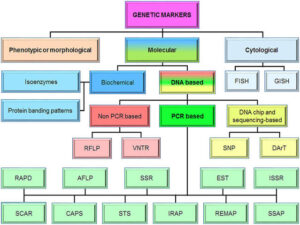Back to: Botany 400 Level
Hello, my brilliant Afrilearn learner! I’m so excited to have you back and ready for another exciting topic! Today, we’re going to learn about how we can use biotechnology to improve plants for food, medicine, and the environment.
The focus of this lesson is plant breeding and germplasm conservation. These two processes are critical in ensuring we have healthier, more productive crops and preserving the genetic diversity of plants. I’m sure you’ve heard of improved crops like golden rice or drought-resistant cassava. Well, plant breeding plays a huge role in making that happen!
Let’s get started and break it down step by step.
Applications in plant breeding and germplasm conservation
Plant breeding and germplasm conservation may sound like technical terms, but they are things that directly impact our daily lives. In simple terms, plant breeding is the process of improving plants to make them better for food production, medicine, and other uses. Germplasm conservation, on the other hand, is about preserving the genetic material of plants to ensure that we don’t lose valuable plant species.

Both of these concepts are essential for making sure that we have the best crops for the future and that we can protect our plants from diseases, pests, and changing climate conditions.
Applications in Plant Breeding
- Improving Crop Yield and Quality Plant breeders work to increase the productivity of crops, ensuring that they grow faster, produce more food, or have better nutritional content. For example, drought-resistant maize and high-yielding cassava are results of plant breeding techniques that help farmers get more food from their crops even in difficult conditions.
- Pest and Disease Resistance One of the main goals of plant breeding is to develop crops that are resistant to pests and diseases. By using genetic markers, breeders can identify the genes responsible for resistance and incorporate them into crops. This reduces the need for harmful chemicals like pesticides. For instance, Bt cotton has been genetically modified to resist the cotton bollworm, a major pest in many parts of Africa.
- Climate Resilience As climate change affects rainfall patterns and temperatures, plant breeders are working to create crops that can thrive under extreme conditions. Crops like salt-tolerant rice and heat-resistant tomatoes are examples of how plant breeding helps us adapt to a changing climate. This is especially important for farmers in regions that experience drought or flooding, like parts of Nigeria.
- Improved Nutritional Content Through plant breeding, crops can be enhanced to provide better nutrition. For example, golden rice has been genetically modified to contain higher levels of Vitamin A, which is essential for vision and immune function. Such improvements are crucial in addressing nutrient deficiencies in populations that rely on rice as a staple food.
Applications in Germplasm Conservation
- Preserving Genetic Diversity Germplasm conservation involves preserving the genetic material (seeds, tissues, or DNA) of plants to maintain biodiversity. This ensures that even if a plant species faces extinction in the wild, its genetic material can be used for future breeding programs. By storing and protecting this genetic diversity, we can maintain a variety of plants for the future.
- Gene Banks One of the key ways germplasm is conserved is through gene banks. These are facilities where seeds and other plant materials are stored in controlled conditions to preserve their viability for years. The International Rice Research Institute (IRRI), for example, maintains a gene bank to store rice varieties that could be important for breeding in the future.
- Wild Species Conservation Wild relatives of domesticated plants often have unique genetic traits that can be used to improve crop varieties. For example, wild tomatoes have genes for disease resistance that can be transferred into cultivated tomatoes. Germplasm conservation ensures that we can continue to use these wild species to improve the resilience and productivity of our crops.
- Cryopreservation For some plants, especially those that don’t store well as seeds, cryopreservation is used. This involves freezing plant cells or tissues at ultra-low temperatures to preserve their genetic material. For example, certain crops like banana are stored in cryopreservation banks to prevent the loss of valuable varieties.

Summary
- Plant breeding helps improve crops by increasing yield, enhancing pest and disease resistance, making plants more resilient to climate change, and improving their nutritional content.
- Germplasm conservation ensures that we can preserve the genetic diversity of plants through methods like gene banks, wild species conservation, and cryopreservation.
- Both plant breeding and germplasm conservation are critical for food security and ensuring that future generations have access to high-quality, nutritious crops.
Evaluation
- How does plant breeding improve the nutritional content of crops?
- What is the purpose of germplasm conservation in plant breeding?
- How can cryopreservation help preserve plant species?
- Why is pest resistance an important aspect of plant breeding?
Now that you understand how plant breeding and germplasm conservation work, you can see how they play a huge role in securing our food future and protecting our planet’s plant biodiversity. With your knowledge, you’re well on your way to understanding how scientists and farmers are working together to make agriculture more sustainable, productive, and nutritious. Keep up the great work and stay excited for what’s next! The world of plant science has so much more to offer, and you’re doing awesome! Keep going strong!
